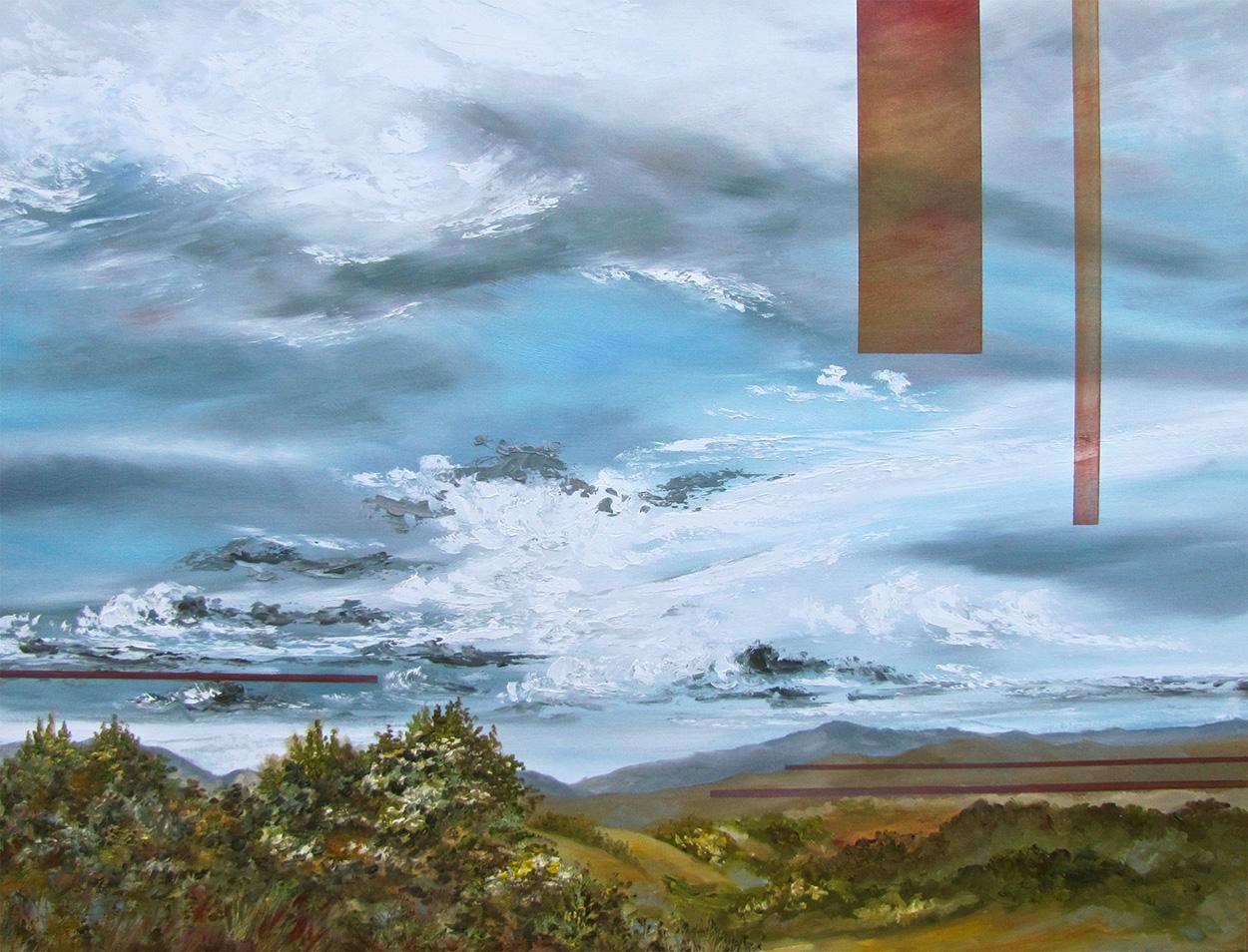The Purpose of Geometry in Art
Cyndy Carstens may be famous for her landscapes and skyscapes, but many of her contemporary art pieces feature geometric elements. What artistic function does adding these geometric pieces serve? Here we’ll take a look at how geometric elements were incorporated into art throughout art history and how Cyndy uses them to elevate her skyscape and landscape pieces.
Geometric Elements in Modern Art
The use of geometric shapes in art has been around for decades. In the modern era, the Constructivists first used geometric shapes in art and brought the trend into popularity with the Constructivist Movement. Constructivists aimed to show order and materialism in art through geometry, where previous artistic movements relied on less concrete or overly representational concepts. In the art sphere, this movement highlighted the notion of the art piece itself as a physical object, which people today use to decorate their walls, the painting itself showing the function of art to add life to the physical space of a home. Geometric shapes further highlighted important aspects of art’s place in society with their boldness. This purpose was especially pointed in Russia where the Constructivist movement originated, often to bring awareness of important social or political causes.
While the use of geometry in art pieces for Cyndy may not be strictly about industry and architecture as it was in the Constructivist movement, it certainly highlights the boldness in her use of geometric shapes amongst the breathtaking skyscapes and nod to drawing the collector’s awareness of the beauty, spirit, and order of nature.
Cyndy’s Use of Geometric Shapes in Artwork
Cyndy is typically known for the vivid colors in her traditional skyscapes and landscapes, which are a thing of beauty, but she also incorporates geometric shapes into some of those pieces as well. This not only gives collectors a more contemporary option and allows Cyndy to experiment with texture and composition, it adds a layer of intrigue to her paintings. Through the juxtaposition of geometric shapes against the landscape or sky, the viewer or collector fulfills one of art’s largest purposes: drawing connections and pondering reasoning. When a rectangle frames an electrical pole or tree featured in one of Cyndy’s paintings, the viewer is able to inquire about spatial relationships and notice what they might have normally missed. Geometric shapes elicit the harmony and order of nature, further reflecting Cyndy’s core desire to draw attention to nature’s beauty and spirituality. The viewer too can come to their own conclusions as it relates to their spirituality with the emotion and curiosity that this art can elicit.
Cyndy Carstens is a Scottsdale based landscape and skyscape painter who incorporates geometric elements into her paintings in order to illuminate curiosity in the collector. To learn more about her art, contact her today.


